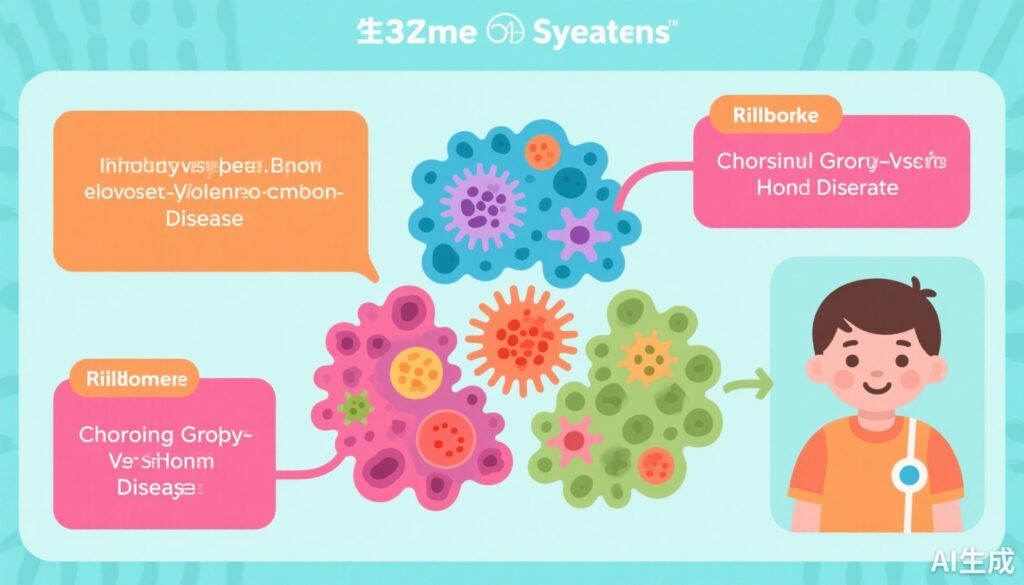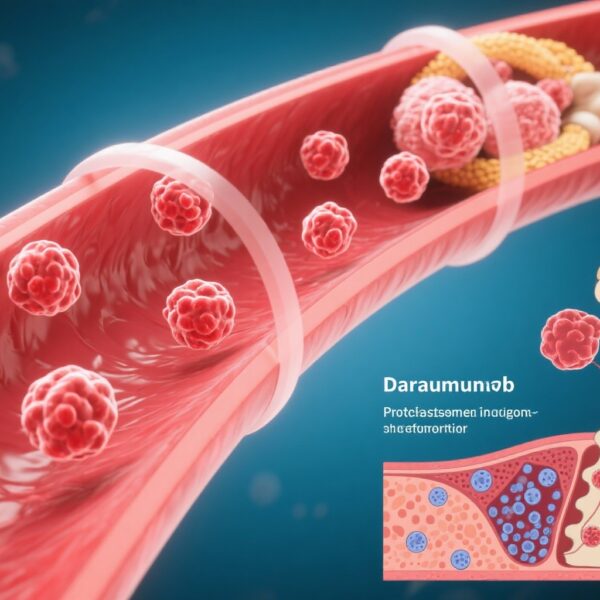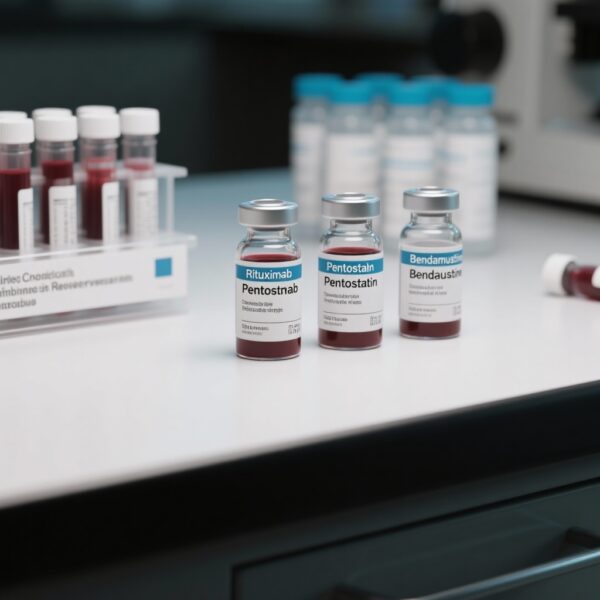Highlight
1. Three distinct biological subtypes of pediatric chronic graft-versus-host disease (cGvHD) identified: each characterized by unique immune cell and molecular patterns.
2. Subtype cGvHD-1 associates with effector memory T cells, cytotoxic NK cells, and early precursor B cells; subtype cGvHD-2 is enriched in phosphatidylcholine, cytokines, and plasma cells; subtype cGvHD-3 features naïve CD4+ and regulatory T cells with measurable T-cell receptor excision circles (TRECs).
3. Clinical correlations reveal subtype-specific associations with prior therapies, transplant characteristics, and disease presentations, suggesting implications for personalized therapeutic strategies.
4. Partial replication in an independent metabolomic pediatric cohort highlights robustness and potential for biomarker-based diagnostics.
Study Background
Chronic graft-versus-host disease (cGvHD) represents a significant post-transplant complication, limiting the success of hematopoietic cell transplantation (HCT), particularly in pediatric patients. cGvHD occurs when donor immune cells attack recipient tissues, leading to multi-organ involvement and increased morbidity and mortality. Despite advances, cGvHD remains a biological enigma often treated as a monolithic entity, complicating the development of targeted treatments.
Understanding biological heterogeneity within cGvHD could improve diagnostic precision, predict clinical trajectories, and allow tailored immunomodulatory therapies. Previous studies have suggested immune dysregulation but lacked comprehensive pediatric cohorts or integrative biological phenotyping. The American Brain and Leukeimia Epidemiology (ABLE) network provides a valuable resource, housing the largest global pediatric cGvHD cohort, enabling sophisticated exploratory analyses to detect biologically distinct subtypes.
Study Design
This investigation utilized clustering analytic techniques on immunophenotypic and molecular data from two ABLE studies (ABLE 1.0 and 2.0), comprising 51 pediatric patients with cGvHD and 158 without. The approach incorporated high-dimensional immune profiling, including T-cell, B-cell, and natural killer (NK) subsets, together with metabolomic data.
To validate findings, metabolomic analyses from an independent pediatric cohort enrolled in the Children’s Oncology Group (COG) ASCT0031 trial (33 cGvHD patients, 39 controls) were employed. Critical clinical and transplant variables, including serotherapy, donor source, conditioning regimens, and prior acute GvHD history, were examined for associations with identified cGvHD subtypes.
Outcomes assessed included immune cell subset distributions, metabolomic signatures, time to cGvHD onset, organ involvement, and overlap with previously described diagnostic biomarkers.
Key Findings
The study identified three biologically distinct subtypes of pediatric cGvHD, each with characteristic immune and molecular signatures:
cGvHD-1 Subtype
- Dominated by effector memory T cells (TEM), cytotoxic natural killer (NK) cells, and early precursor B cells.
This subtype was significantly associated with prior serotherapy exposure, mainly anti-thymocyte globulin (ATG), suggesting immunomodulatory effects influencing disease biology.
cGvHD-2 Subtype
- Characterized by elevated phosphatidylcholine metabolites, cytokine profiles, and plasma cell predominance.
This subtype showed clinical association with liver involvement and was more commonly found in de novo cGvHD presentations (cGvHD without preceding acute GVHD).
cGvHD-3 Subtype
- Marked by higher counts of naïve CD4+ T cells (TN) and naïve regulatory T cells (Tregs), later disease onset, and uniquely measurable T-cell receptor excision circles (TRECs), indicative of recent thymic emigrants.
Features included association with peripheral blood stem cells as the graft source, total body irradiation (TBI) conditioning, and absence of prior acute GvHD.
These subtypes did not show strong clustering by specific organ involvement overall, underscoring the complexity of clinical manifestations across biological variants. However, some clear clinical-pathologic associations emerged, such as liver involvement with cGvHD-2.
Comparisons of each subtype with non-cGvHD controls highlighted a set of shared biomarkers previously established in a cGvHD diagnostic classifier, confirming the relevance of immune activation pathways across the disease spectrum.
Partial replication using metabolomic data from the independent COG ASCT0031 cohort reinforced the biological validity of these subtypes, suggesting their potential utility in clinical stratification and biomarker development.
Expert Commentary
The identification of discrete biological subtypes within pediatric cGvHD challenges the prevailing one-size-fits-all model of this complex immunologic complication. By dissecting immune cell networks and metabolic profiles, Ng et al. pave the way for precision medicine approaches in cGvHD management.
The association of subtype cGvHD-1 with ATG exposure corroborates previous insights into serotherapy’s impact on immune reconstitution, while the immunophenotypic features of cGvHD-3 suggest enhanced thymic function and distinct tolerance mechanisms.
The observation that organ involvement does not map tightly onto biological subtypes invites further mechanistic exploration and highlights the need for multi-parameter diagnostics beyond clinical phenotyping.
Limitations include the relatively small size inherent to pediatric cGvHD cohorts and the observational design, which warrants prospective trials to evaluate subtype-specific therapeutic interventions.
Future research should integrate transcriptomic, proteomic, and longitudinal clinical data to refine subtype definitions and link them to outcomes and treatment responsiveness.
Conclusion
This study substantiates the existence of at least three biologically distinct subtypes of pediatric cGvHD, characterized by unique immune and metabolic signatures and differential associations with transplant variables and clinical phenotypes. These findings hold promise for improving diagnostic accuracy and implementing subtype-focused therapies, reducing morbidity and enhancing survival after pediatric hematopoietic cell transplantation.
Clinicians and researchers should consider biological heterogeneity in cGvHD when devising treatment protocols and clinical trials. The integration of immunophenotyping and metabolomics could become a cornerstone for personalized management strategies in this challenging condition.
Funding and ClinicalTrials.gov
This research was supported by collaborative efforts within the ABLE network and affiliated pediatric transplant institutions. The metabolomic validation cohort was derived from the Children’s Oncology Group (COG) trial ASCT0031 (ClinicalTrials.gov identifier not specified in the source).
References
Ng B, Harris AC, Abdossamadi S, Aubert G, Bajwa RP, Bhatia M, et al. Distinct Biological Subtypes of Chronic GVHD after Pediatric Hematopoietic Cell Transplantation. Blood. 2025 Oct 8. doi:10.1182/blood.2025028625. Epub ahead of print. PMID: 41060324.



